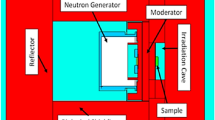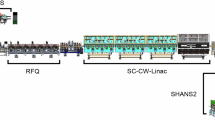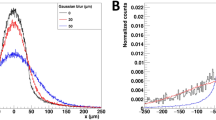Abstract
SOME time ago one of us attacked the problem of the radioactivity of potassium by carrying out a partial separation of its isotopes and determining the atomic weight and the radioactivity of the heavy fraction obtained. The fact that the heavy fraction was found to be more active than the normal potassium proved that the activity is not due to the main isotope 39 but to a heavier one. By comparing on one hand the activities of these two samples and their atomic weights on the other, it is possible to determine the mass of the radioactive isotope.
This is a preview of subscription content, access via your institution
Access options
Subscribe to this journal
Receive 51 print issues and online access
$199.00 per year
only $3.90 per issue
Buy this article
- Purchase on SpringerLink
- Instant access to full article PDF
Prices may be subject to local taxes which are calculated during checkout
Similar content being viewed by others
References
G. v. Hevesy, W. Seith and M. Pahl, Z. phys. Cfiem., Bodensteinfestbd., p. 309, 1931.
F. W. Aston, NATURE, 133, 869, June 9, 1934.
D. Bocciarelli, Atti. R. Accad. Lincei, (6), 17, 830; 1933.
G. Gamow, NATURE, 133, 744, May 19, 1934.
Author information
Authors and Affiliations
Rights and permissions
About this article
Cite this article
HEVESY, G., PAHL, M. & HOSEMANN, R. Radioactivity of Potassium. Nature 134, 377 (1934). https://doi.org/10.1038/134377a0
Issue date:
DOI: https://doi.org/10.1038/134377a0
This article is cited by
-
Nuovo metodo per la determinazione dell'energia dei quanti γ emessi da sorgenti deboli
Il Nuovo Cimento (1949)
-
Gli elementi debolmente radioattivi
Il Nuovo Cimento (1940)
-
Natural and Artificial Radioactivity of Potassium
Nature (1935)



